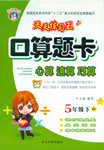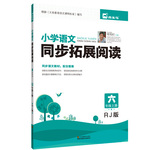题目内容
【题目】假定你是李华,你的英国笔友Jack对中国的铁路很感兴趣,想乘坐火车旅行。请根据以下要点提示,写一封书信,介绍中国铁路系统。
1).火车类型:高铁(HSR) (G) (300 km/h);
动车(CRH) (D) (200 km/h);
快车(Express) (T/Z/K) (100 km/h);
2).火车优点:安全,可以观赏沿途风景,省钱。
注意:
1).词数100左右;
2).可以适当增加细节,以使行文连贯;
3).开头和结尾已给出,不计入总词数。
Dear Jack,
I'm honoured that you show great interest in our trains.
Yours,
Li Hua
【答案】Dear Jack,
I'm honoured that you show great interest in our trains. Now we have three kinds of trains. The traditional one is the express train, which is slow but cheap, with letter K/T/Z marked on the ticket. Another one is CRH, running at the speed of 200 kilometers per hour, and you can see letter D on the ticket. However, the fastest train is HSR traveling up to 300 kilometers per hour. Their tickets are marked with letter G.
Traveling by train is safe over a long distance. Besides, you can see the beautiful scenery along the railway. It won't cost you too much.
Look forward to your visit to China!
Yours,
Li Hua
【解析】本文是一篇提纲类作文,要求考生以李华的身份向英国笔友Jack写一封信,介绍中国铁路系统。要注意书信的格式和特殊用词。考虑用用一般现在时来写。要点:1.火车类型:高铁(HSR) (G) (300 km/h);动车(CRH) (D) (200 km/h);快车(Express) (T/Z/K) (100 km/h);2.火车优点:安全,可以观赏沿途风景,省钱。这篇文章对于考生的综合能力要求较高,要求考生有很强的谋篇布局的能力和组织要点的能力。需要注意紧扣文章主题,给出的要点都需要包括,缺一不可。写作时注意准确运用时态,上下文意思连贯,符合逻辑关系,一定要契合给出的开头,不能出现文章脱节问题。尽量使用自己熟悉的单词句式,同时也要注意使用高级词汇和高级句型使文章显得更有档次。

 口算心算速算应用题系列答案
口算心算速算应用题系列答案 同步拓展阅读系列答案
同步拓展阅读系列答案【题目】The Guggenheim Museum attempts to help educators connect students with art. It offers programs for educators, including free arts curricula, professional development courses and workshops, as well as professional meet and greets that pair artists with public school teachers throughout New York City.
● Visiting with your students
The museum offers a variety of ways for educators and their students to visit, from self-guided tours to a guided experience.
Guggenheim Museum Highlights | Perfect for first-time visitors, the Highlights Tour focuses on the museum’s innovative architecture, history, and permanent collection. |
Special Exhibition | This tour offers an opportunity to engage in a lively, in-depth exploration of one of our special exhibitions. Learn about the artistic processes and movements behind some of the most revolutionary artists of the modern and contemporary age. |
Custom Tour | Tour can be customized to accommodate a variety of interests, learning styles and subject matter. Our gallery educators can create a one-of-a-kind experience tailored to your group’s needs. |
Lecturer’s Badge | Conduct a group tour of up to 20 people. |
● Arts curriculum online
The Guggenheim produces free curriculum materials on exhibitions for educators to use both during school visits and in the classroom. While the material focuses on recent exhibitions, a comprehensive range of lessons cover many works and artists in the museum’s collection.
● Learning through Art
Learning Through Art sends experienced teaching artists into New York City public schools, where they work with classroom teachers to develop and facilitate art projects into the school curriculum.
● Education facilities
Housed in the Sackler Center for Arts Education, the Guggenheim’s education facilities include studio art and multimedia labs, a theater, an exhibition gallery, and a conference room.
【1】Who are the museum’s programs intended for?
A. Students. B. Parents.
C. Educators. D. Artists.
【2】Which tour can be designed based on your own interest?
A. Custom Tour.
B. Lecturer’s Badge.
C. Special Exhibition.
D. Guggenheim Museum Highlights.
【3】How do teaching artists help to make art projects into the school curriculum?
A. By giving lessons online.
B. By working with teachers.
C. By providing free materials.
D. By designing projects alone.
【4】What can we do in the Sackler Center?
A. Appreciate art works.
B. Dine with your friends.
C. Perform science experiments.
D. Collect your favorite exhibits.
【题目】假设你是李华,最近你所在的班级讨论了北京动物园是否应该迁出市区。请你给Teens写一封信,反映讨论结果。
赞成迁出 | 1.游客多,易造成交通堵塞 2. 郊区环境有利于动物生存 |
反对迁出 | 1.建于1906年,中外闻名 2. 搬迁易造成动物死亡 |
你的观点 | --- |
注意:1.词数100左右。信的开头和结尾已写好,不计入总词数。
2.可适当增加细节,以使行文连贯。
参考词汇:郊区 suburb
Dear Editor,
Recently, in our class there has been a heated discussion about ______________________________________
____________________________________________________________________________________________
____________________________________________________________________________________________
____________________________________________________________________________________________
____________________________________________________________________________________________
_____________________________________________________________________
Yours truly,
Li Hua